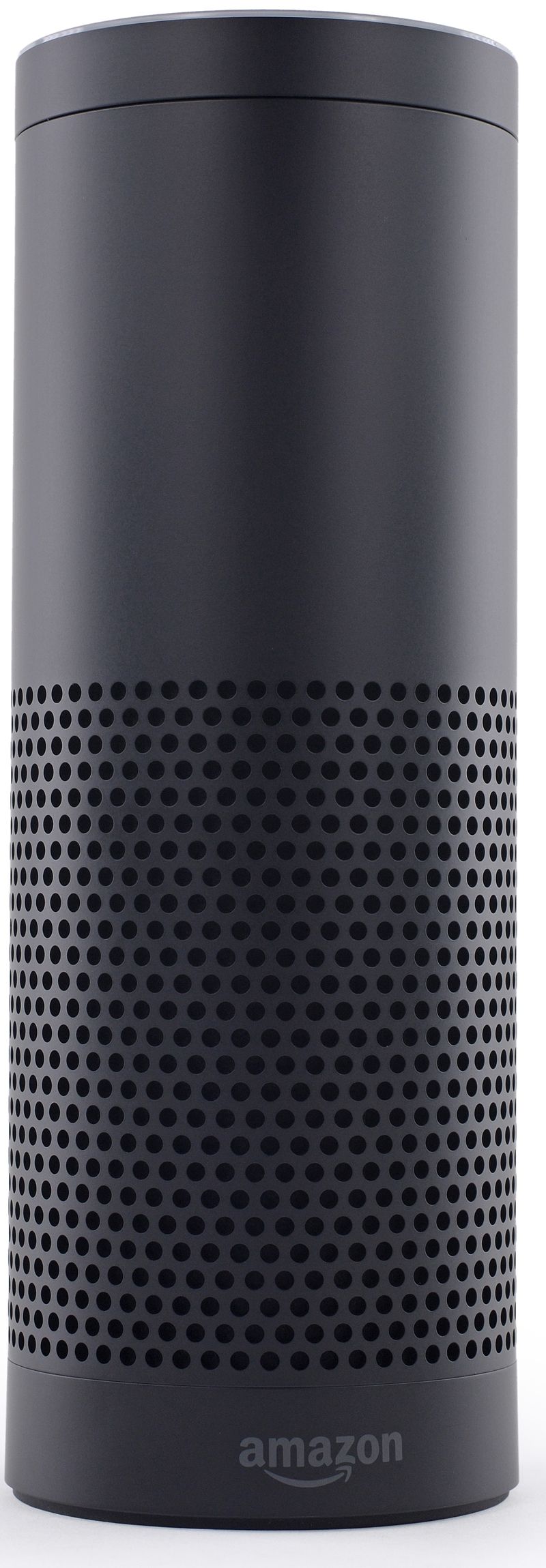Difference Between Echo and Echo Plus
If you are a fan of Amazon products, then you might have already familiar with the Amazon Echo and the Echo Plus. These are the two important smart devices that work hand in hand with the Alexa – a cloud-based virtual assistant developed by Amazon. Both the devices are powerful smart speakers that use Wi-Fi and Bluetooth to give you the Alexa functionality while on-the-go. But each has different features and functionalities. Let’s see how they compare.

What is Amazon Echo?
Amazon Echo is a hands-free smart device developed by Amazon to give voice responses to various queries. It’s a 9.25-inch tall cylinder-shaped speaker with an in-built seven-piece microphone array for improved voice response. It can perform voice integration tasks such as music playback, streaming podcasts, providing real-time info, making to-do lists, news updates, weather information, and more. It connects to Alexa – the brains of the Echo and your personal voice-based assistant – to perform all the above-mentioned tasks.

What is Amazon Echo Plus?
The Echo Plus is a streamlined version of the Echo with a new, improved design and better sound. It boasts a sleek cylindrical design with a fabric, removable outer shell. The new Echo Plus is shorter and wider than its predecessor, and features a larger 3-inch neodymium woofer for an unsurpassed bass-thumping music listening experience. The best thing about the Echo Plus is the Zigbee smart-home hub that allows it to interact with other smart devices on a home automation network without needing a special hub.
Difference between Echo and Echo Plus
Design
– The original Echo is a 9.25-inch tall cylinder with an in-built seven-piece microphone array. Amazon retired the original Echo in 2017 and replaced it with a revamped and a much shorter Echo which stands 5.9-inches tall. Plus you can choose from the different body designs. The Echo Plus, on the other hand, looks more like a larger version of the original Echo. The Echo Plus boasts a sleek cylindrical design with a fabric, removable outer shell. It’s the same height as the 2nd Generation Echo, but a bit lighter than the Echo by 29 ounces.
Audio
– While all the Echo smart speakers come with Alexa built-in and can play good quality music, courtesy of Dolby speaker technology, the Echo Plus has considerably better sound quality than the Echo. The Echo boasts a 2.5-inch woofer to deliver a quality bass, but the Echo Plus provides a better listening experience, thanks to a larger 3-inch neodymium woofer that produces that extra thumping bass for beautiful quality sound. If music and audio quality is your thing, then the Echo Plus is definitely a better deal than the Echo.
Power
– The Echo has to be plugged into a wall outlet for power at all times and there is no rechargeable battery. As smart as the Echo is, it’s always need to be connected to a power source, which means the base needs to be always on for the Echo to work or else it doesn’t operate. The Echo Plus is definitely an upgraded version of the Echo in terms of mobility as it does not need to be plugged into a power outlet at all times. In fact, it has a decent battery life to get you up to 9 hours of uninterrupted music playback.
Smart Features
– One of the major differences between the Echo and Echo Plus is that the Echo Plus has a built-in Zigbee smart-home hub. This means it can connect to the many smart home devices such as Philips Hue bulbs, Hive Thermostat, or other smart bulbs without having to setup a bridge or a special hub. Plus the Echo Plus has built-in thermometer which allows you to carry some actions that pertain to the temperature in your room like turn on a smart fan or a thermostat for that matter. Additionally, it features seven distinct microphones to pick up your voice commands more aptly.
Price
– The Echo Plus is a major overhaul of the Echo, providing a superior mix of quality design and better smart features. But quality comes at a price and in this case, it costs you $50 more. The Echo costs $99, while the Echo Plus is priced at $149, which is still a good deal considering you get a smart-home hub and a ton of other smart features for a better smart-home integration. Besides, the Echo offers almost the same features as the Echo Plus.
Echo vs. Echo Plus: Comparison Chart

Summary of Echo vs. Echo Plus
While both Echo and Echo Plus are great smart speakers with a similar cylindrical design, the Echo Plus seems to be a streamlined version of the Echo but with added smart features such as the Zigbee smart-home hub, which allows you to connect it to other smart home devices. Well, the Echo offers all the basic functionalities of what you’d normally expect from a smart speaker and more, but the Echo Plus is undoubtedly is a major overhaul of its predecessor with better sound quality, more smart features, better connectivity, and more. The extra $50 is worth every penny, and a built-in temperature sensor is a cherry on the top. The Echo, however, is just about everything if you don’t have a quite few smart devices to manage.
- Difference Between Caucus and Primary - June 18, 2024
- Difference Between PPO and POS - May 30, 2024
- Difference Between RFID and NFC - May 28, 2024
Search DifferenceBetween.net :
Leave a Response
References :
[0]West, Dominic. Amazon Echo: 2017 Edition User Guide and Manual. South Carolina: CreateSpace, 2016. Print
[1]Rawes, Erika. “Amazon Echo vs. Echo Plus: Which Should You Get?” Digital Trends, January 26, 2018. https://www.digitaltrends.com/home/amazon-echo-vs-echo-plus/. Accesed April 14, 2019.
[2]Image credit: https://commons.wikimedia.org/wiki/File:Amazon_Echo_Plus_02.jpg
[3]Image credit: https://en.wikipedia.org/wiki/Amazon_Echo#/media/File:Amazon_Echo.jpg
